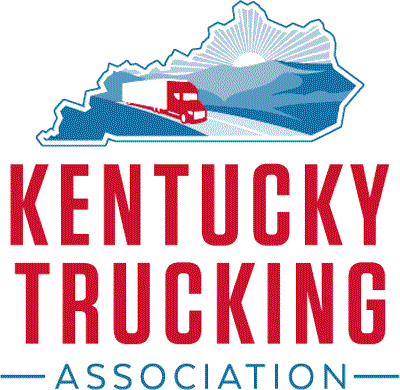Ah! “To challenge or not to challenge,” that is the question. In this edition of Truesdell’s Safety Tips, I will discuss “Data Q’s,” some tips or suggestions on how to approach Data Challenges and some things that may not be such a good idea.
DQ’s, Data Challenges, RDR’s, whichever acronym you prefer, all boil down to your disagreement with a violation issued on a safety inspection or crash report. The Data Challenge process in electronic format began February 2004. It’s hard to believe it’s been that long ago.
After 24 years of CMV enforcement, do I believe DQ’s are a good idea? Absolutely! In those 24 years, I can confirm that enforcement does and will continue to occasionally make mistakes. In the right context, I believe DQ’s are a good thing. Provided they are presented with some sort of tangible or supporting evidence, they should be honored by the enforcement agency. With that said, let’s look at some tips that hopefully will help you “win” your data challenge.
Best Practices:
- Photographs/Video — I suggest having the driver take photographs and/or video of the alleged violation as soon as it is practical upon completion of the inspection, especially if the driver thinks the violation is in error. This will show the condition(s) at the time of the inspection.
- FMCSR/Statute — When making your challenge, reference the FMCSR (Regulation) or state statute. This will show you are aware of the regulation/statute with which you have been cited and it could be an instance where that regulation/statute is inaccurate for the violation alleged. Or in an instance where the officer/inspector has interpreted the regulation improperly, or it is just not the correct regulation/statute for the alleged violation.
- HOS Violations — I suggest sending the entire eight days of logs that incorporate the day of violation. This is two-fold. It will show the driver’s last qualifying rest period and will eliminate the enforcement agency from asking you to send logs for additional days to better review the HOS violation(s). Any additional ELD data that helps support the version of events should be sent as well.
- CDL/Medical certificate — Send any documentation issued by the state drivers licensing agency. This should refute any “expired/suspended” violation(s) situations. I emphasize any “email confirmations” the state might provide when the medical certificate is submitted. This may vary from jurisdiction to jurisdiction, but with regard to Kentucky, they do send a “confirmation” showing the certificate was received. DISCLAIMER: §383.73(o) gives the state 10 days to post the medical certificate information to the CDLIS record.
- Data-Q Timely — Send the Data-Q in a timely manner. The guidelines allow the carrier to challenge any violation up to three years from the date of the inspection. However, “just because you can, doesn’t mean you should.” You should take enough time to research the violation to make a valid challenge; however, I recommend making the challenge with the event(s) still fresh on the mind of both the driver and enforcement officer.
- Violations with Associated Citation — These are most likely the easiest to challenge. If the driver is issued a citation and it is subsequently dismissed by the court, you should gather your court documentation along with the citation and inspection report and submit it through the Data-Q website. It should be noted, even though the citation is dismissed, and the dismissal is entered into the system, the CSA points are removed from the calculation. However, the violation is not necessarily “removed” from the record. It can still be seen by FMCSA and enforcement personnel but should not be visible to the public.
Note: This should not be confused with a standard DQ, where there is no citation issued. If the enforcement agency determines the violation is incorrect, they will remove the violation from the record, and it is no longer visible to other enforcement or the public. - Crashes — Depending upon the situation, this too can be simple. As with all data challenges, I recommend researching the report and gathering as much information as possible, whether that be photos or video, statements, etc., before you draft your challenge. Some of these can be as simple as the reporting officer identifying you (the carrier) inaccurately by using the wrong DOT number.
If you are aware of the correct carrier in this type of situation, I recommend sending that information as well. NOTE: The state agency does not have the capability to determine if the crash was “preventable” or “non-preventable.” That determination is still up to FMCSA and should be directed to them through the Data-Q website by submitting to the appropriate link. - Data-Q User Guide — Lastly, I would refer you to the Data-Q user guide found on the website. This is a great reference with tips and help for the novice DQ submitter.
Best Practices… Well, Maybe Not!
These next few items could be characterized as perhaps “popular or trending,” but they may not be the best ideas for challenging a violation. Speaking from experience and dealing with DQ’s for more than a decade, I’m not saying you cannot challenge whatever you want; I’m just trying to help you make the best of your time and energy.
- DQ Everything! — I do not recommend challenging every violation on every inspection “just because.” This tends to create “tension” right from the start. Especially if you, the carrier, already know it is a valid violation, i.e., “We would like you to remove this flat tire violation, because we take safety seriously and the driver had nothing to do with getting a flat tire.” This statement would most likely be 100% accurate. The carrier is safety conscious, and the driver did not intentionally get a flat tire; it just happens. And yes, it will count CSA points against your score. However, most enforcement agencies are just doing their jobs; they can only take the violation at face value. A flat tire is a violation of §393.75(a)(3), it’s not personal, it’s just part of enforcement’s philosophy. At the time of the inspection, they observed a violation, and they note it on the inspection report.
- Professional — Submit the data challenge in a professional manner. Refrain from being accusatory or belittling of the officer, and don’t use profanity. This will go a long way with the person(s) reviewing the challenge. It’s completely acceptable to submit your “viewpoint” but try to not submit your “opinion.” It’s a fine line between the two, but if you remain professional and describe the events from your perspective with facts it usually has a better outcome.
- False Information — I would strongly suggest not submitting anything knowingly false. Knowingly sending false information can only be a detriment to the situation. It is just not worth it. As Sgt. Joe Friday would say “just the facts.” For those readers not familiar with the reference; Google/YouTube the old T.V. show “Dragnet” or “Sgt. Joe Friday,” then you’ll understand.
In summary, these are not absolutes but rather suggestions to hopefully help you with the Data-Q process. The most important take-away from this topic would be this: the DQ process is to correct inaccurate information on a safety inspection, that in turn affects your CSA score. To be successful, you must complete the challenge in the most professional and timely manner possible. I also recommend, when making your challenge, you provide some sort of evidence and/or documentation as to indicate why the violation is inaccurate, so it may be removed from the inspection report. Both professional tact and a timely manner will be advantageous to you winning the challenge.
Tristan Truesdell is the Staff Assistant for the KTA and is a retired Captain from the Kentucky State Police with 24 years of CMV enforcement experience.










